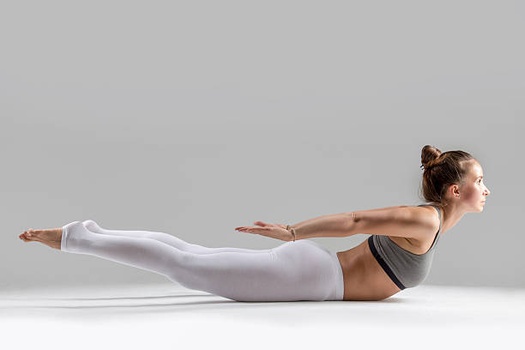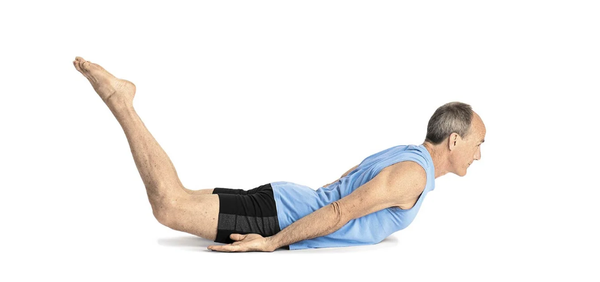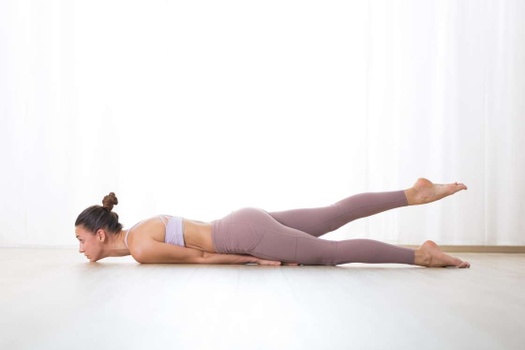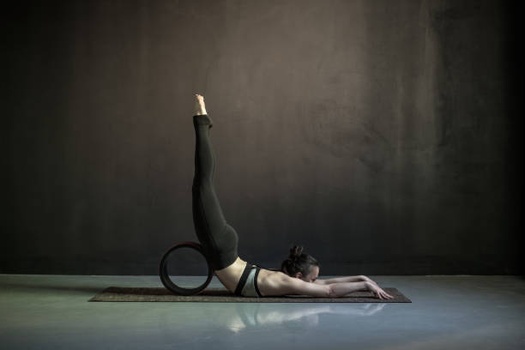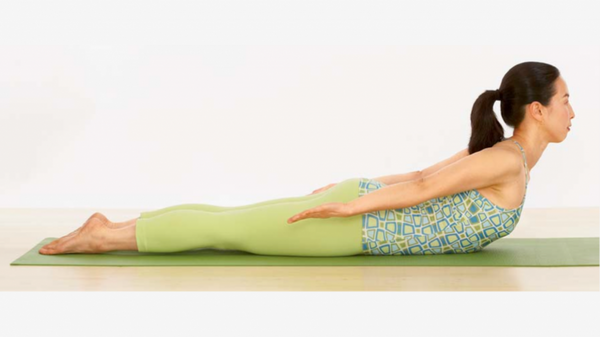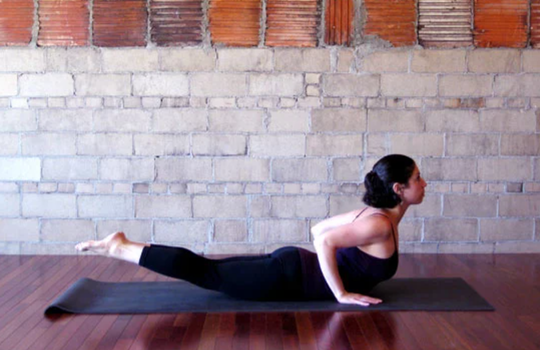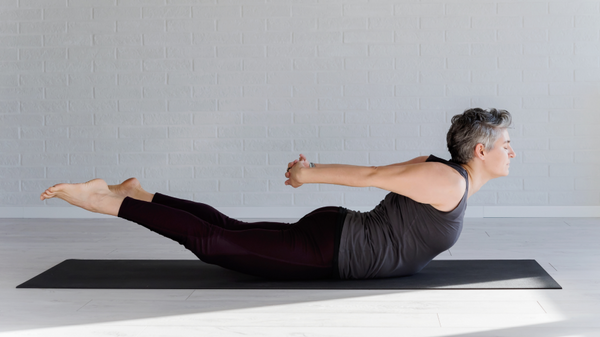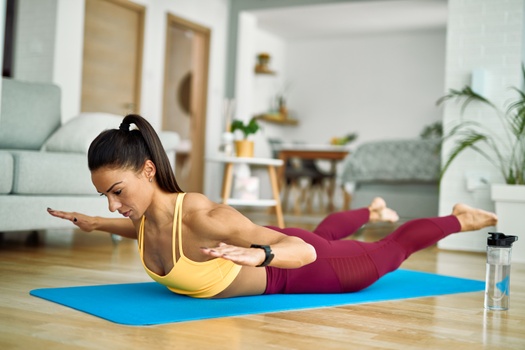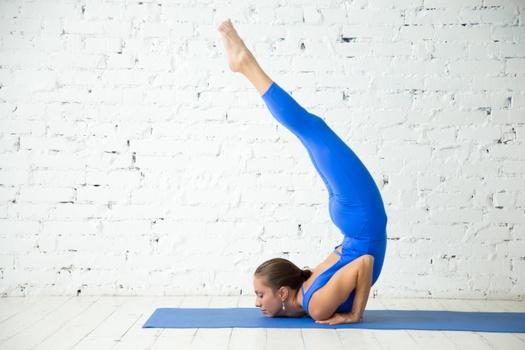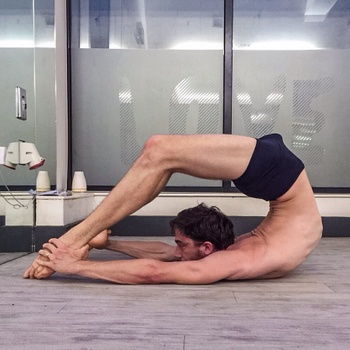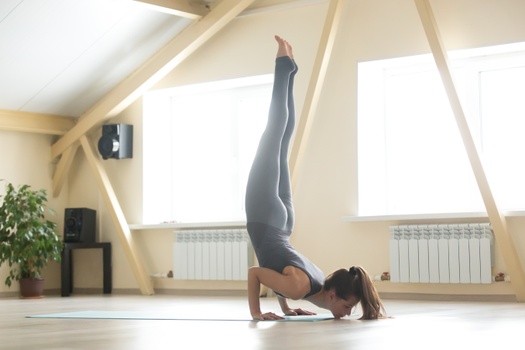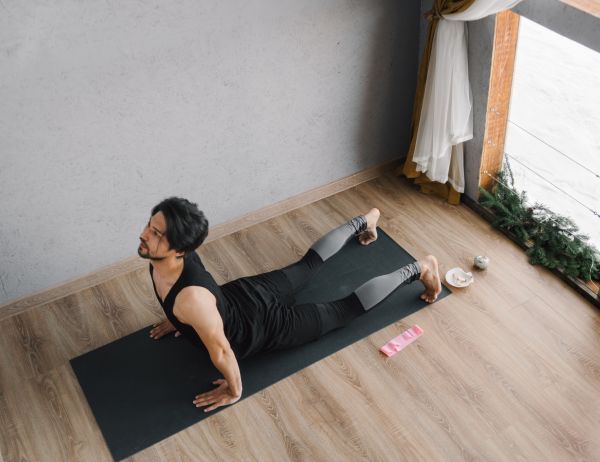The whole practice of successfully getting into Salabhasana is divided into four different parts:
Part 1 - Preparatory Poses for Salabhasana
First, it’s important to warm up the shoulders, neck, spine, lower back, and legs in preparation of Locust pose. Start with a few dynamic body stretches and then slowly move into performing the following yoga asanas for complete body activation:
1. Surya Namaskar (Sun Salutation) - If you are working out in the morning right after waking up, performing the Surya Namaskar flow will activate blood circulation in the legs, spine, and upper body.

Perform sun salutations for a minimum of 10 to 12 rounds and let your muscles open up. This way, your muscles, ligaments, and joints will be safe from any unwanted injury.
2. Bhujangasana (Cobra Pose) - If you feel tightness in your lower back, cobra pose can help ease the tension. Lie down with your belly on the ground and legs spread out behind. Make sure your core and glutes are tight.

Now, place your arms close to your chest and inhale deeply as you lift your upper body off the mat. Keep a slight bend in your arms, and hold this backbend stretch for a few seconds, and then gently release this pose.
3. Urdhva Mukha Svanasana (Upward-Facing Dog Pose) - This posture is very similar to cobra pose, but your muscles will flex even deeper because your body is not resting on the ground.
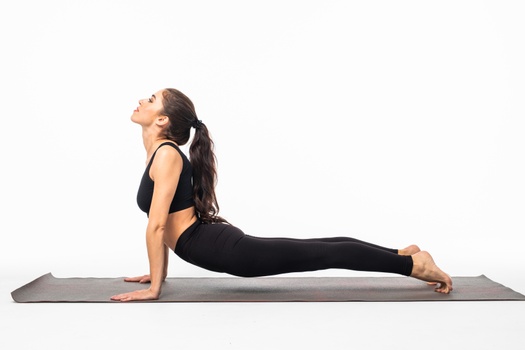
The only difference between the upward-facing dog pose and the cobra pose is that you lift your knees off the mat and keep your body weight on your palms and toes. Hold this pose for a few seconds.
Part 2: Step-by-Step Instructions to Perform Salabhasana
The locust pose can help lengthen and extend your spine and strengthens your deep core and back muscles.
This pose can provide therapeutic benefits to your lower back if you follow the below-mentioned cues carefully:
Step 1- Lie on your belly with your legs extended, and your arms stacked under your head. Rest your head on your forearms.
Step 2- Keep your legs close to each other and breathe mindfully.
Step 3- With an inhale, extend your arms to your sides and lift your lower legs off the mat, keeping your upper legs (thighs and core) flat on the mat.
Step 4- Engage your glutes and press both legs together while holding them up.
Step 5- Rest your upper body on your chin and hold this position here for 3 to 5 full breaths.
Step 6- If you feel strong, lift your chin and chest off the mat, and hold the position for 3 to 5 deep breaths again.
Breath Awareness:
Inhale deeply as you lift up your legs.
Keep inhaling and exhaling slowly while holding the pose.
Exhale slowly as you release the pose and place your legs back on the ground.
Performance Duration for Beginners: Hold the locust pose for 20-60 seconds.
Performance Duration for Advanced: Hold the locust pose for 1 to 3 minutes.
Part 3: Things to Keep in Mind
It’s important to keep a few things in mind before starting the locust pose practice:
Engage the abdomen: In order to lift your legs like a grasshopper, your core muscles must be engaged and stable.
If you are unable to lift your legs, you may lack core and lower back strength. If that’s the case, try practicing some core strengthening asanas before your main practice.
Do not overwork your lower back: Over-flexing around the tailbone while your legs are raised can cause lower back discomfort and pain later on. This can also lead to injury, so try not to push your body beyond its limits.
Part 4: Relaxing Poses After Salabhasana
It’s essential to decompress your whole spine after any backbend asana, so make sure to end your Salabhasana practice with these follow-up yoga poses:
1. Advasana (Reverse Corpse Pose): From Salabhasana, place your legs on the mat and rest your forehead on the ground as you get into the reverse corpse pose.
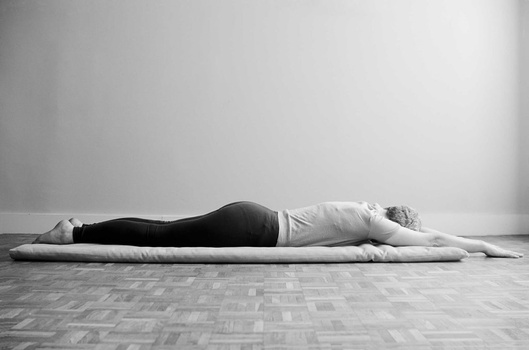
This pose is best for coming back into a neutral state after flexing the lower back for prolonged durations. Focus on your breath and slowly feel the tension leaving your body.
2. Uttana Shishosana (Puppy Dog Pose): From Advasana, move your arms and legs into a tabletop position. Slowly walk your hands out and push your hips halfway back towards your heels.
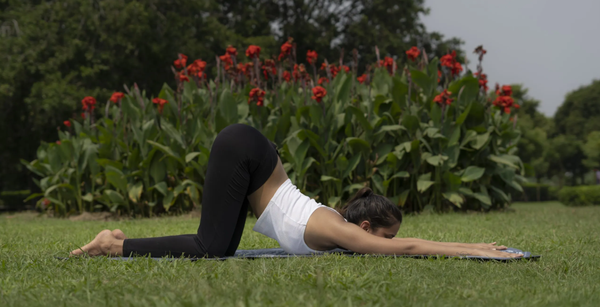
Because this pose is a heart-melting restorative yoga pose, you will feel a calming stretch in your upper back, neck, shoulders, and arms. It will also release any excess tension around your lower back.
3. Adho Mukha Virasana (Forward Bend Hero Pose): Move your legs from the puppy dog pose into the hero pose stance. Place your torso and rib cage down between your legs and rest your head on the ground.
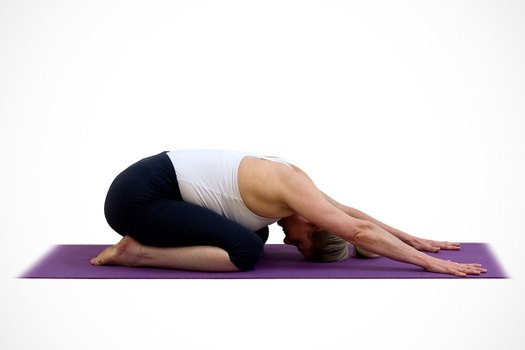
Stretch both your arms forward and feel a deeper stretch from your lower back to your upper body. Hold this relaxed pose until your lower back aligns back to its normal shape.
